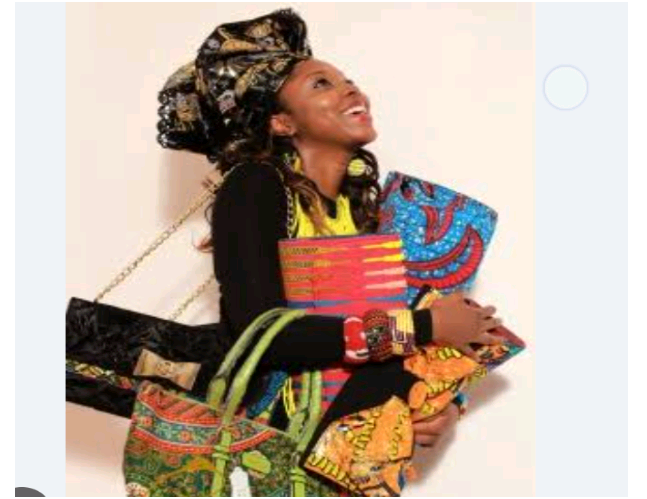Ankara fabrics have long been associated with African culture. What makes this unique set of fabrics so glamorous and its use widespread across Nigeria and Africa? Simple – it has a broad variety of possible designs – some simple, some complex. But overall, the ease with which Ankara fabrics are used to depict Nature, tell stories of African tradition, or illustrate diverse objects and ideas is amazing. Additionally, this interesting fabric is so versatile. It can be used to sew even the most intricate fashion designs and it still comes out looking regal.
The Origins of Ankara Fabric
Would it interest you to know that Ankara fabrics did not originate from Africa?
Otherwise called Dutch Wax, African Wax or Holland Wax, Ankara is made out of pure cotton material. Across Africa, it is also called Kitenge/Chitenge. It is made using a technique known as ‘wax-resistant’ technique, such that the print does not change color or fade easily if done well. The waxing procedure can be done using a manual method, or with textile machines.
The story of the Ankara fabric began in Indonesia, in the year 1846. Printed wax fabrics or ‘Batik’ materials were commonly worn in Indonesia. The demand for printed cotton was also quite high. To make Batik, designs were made on cloth using wax (manually) before ever applying dye to the cloth. To make the production of waxed cotton material faster, a Dutch merchant named Pieter Fentener Van Vlissingen mechanized its production. From there, his company (Vlisco) introduced the waxed cotton prints into Ghana. Its use has since spread all over Africa.
Where to Buy Ankara Fabric
Modern Ankara fabrics are now mostly manufactured in China and imported into Nigeria, as well as the rest of Africa. A smaller percentage of Ankara fabrics are manufactured in West Africa. The ones made in West Africa are actually more expensive than China-made versions.
Needless to say that African prints are enthusiastically promoted by fashion designers. This special fabric has not only acquired a Nigerian (and African) identity because of its numerous African patterns. But fashion designers and fashionistas have long discovered there are an endless number of tailoring styles that can be made out of the Ankara fabric.
Also Read- A Journey Through Nigeria’s Natural Wonders: 7 Breathtaking Landscapes to Explore
Uses of Ankara Fabric
In recent years, people have performed amazing experiments with the Ankara fabric. It has gone beyond merely sewing native blouses and wrappers (‘iro and buba‘) or using it to create imaginative native styles.
Surprisingly, Ankara fabrics are now used to create modern office wear. You could see an Ankara blazer here, another Ankara suit there, or Ankara trousers and formal tops for women. Some designers have even ventured to create military-style uniforms out of Ankara fabric.
In the art and crafts business, Ankara fabric is no longer a stranger. The uses of Ankara fabric continue to multiply in the hands of creative people. Ankara fabric is now used to create the following accessories:
- Hats and caps
- Bags and purses
- Shoes
- Head band
- Baby shawl
- Ear-rings (oh yes!)
- Overalls
- Jumpsuits
- Bathing suits
- Beach wear
Ankara fabrics have been worn in Africa for a very long time. It is part and parcel of many African cultures. The manually done batik designs are native to many African societies.
Ankara fabrics are worn to many special occasions that include weddings, festivals, and religious ceremonies. In fact, Ankara fabric features prominently in what is known as ‘Aso Ebi‘ (Family wear) amongst the Yoruba people of southwest Nigeria. The ‘Aso Ebi’ phenomenon is now widespread across many places in Nigeria and beyond.
One could see family members, colleagues, and friends wearing the same cloth for an occasion. Out of 20 such persons gathered at an event, you can be sure that at least half of them are wearing the same Ankara fabric.
Do Patterns on Ankara Fabrics have Meanings?
We have spoken of designs on Ankara fabric that tell stories. Yet again, some of these patterns are actually African proverbs or symbolism. For instance, the Coure Blesse pattern from Togo symbolizes a woman with a broken heart. Ghana‘s Cha Cha Cha pattern depicts change, being demonstrated with musical rhythms.
Ghana is a leading producer of Ankara fabric. And thus, these Ankara is often used in Ghana to portray events, highly-respected people, or adages. Each unique pattern has a special name.
Some Ankara patterns with specific meanings include the following:
Fish scales – A reminder to appreciate the little things in life.
Obaaba – This design originated from amongst Twi people of Ghana. It appears like a cross between a flower and an atom molecule. It is said to represent a good woman.
Stool – A repeated stool design is a Ghanaian proverb; that ‘if you want to talk about me, take a stool and sit down‘.
Sugarcane – The sugarcane is a Ga statement translating to ‘I love you like sugarcane‘. Ga is one of the tribes in Ghana.
Birds in flight – This translates to ‘Money flies‘ (like birds).
Tiny circles arranged in radial form – This depicts a well, or ripples in water.
